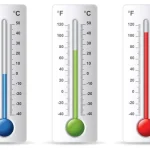In our everyday lives, converting between different units of measurement is essential, especially in fields such as construction, engineering, and even simple household tasks. One common conversion is between inches and feet, two fundamental units of length in the imperial system. To better understand this, we’ll walk through the specific case of converting 42 inches to feet and discuss the broader implications of unit conversions in practical applications.
Understanding the Basics: Inches to Feet
Before delving into the conversion process, it’s important to understand the relationship between inches and feet. Both are part of the imperial system, which is primarily used in the United States and a few other countries. The basic conversion factor between these units is:
1 foot = 12 inches
This relationship forms the foundation for converting any measurement in inches to its equivalent in feet. It’s a simple division process where you divide the number of inches by 12 to find the number of feet.
How Many Feet Are in 42 Inches?
Given the conversion factor, we can now address the question: How many feet are in 42 inches?
To convert 42 inches to feet, we use the following formula:
Feet=Inches12\text{Feet} = \frac{\text{Inches}}{12}Feet=12Inches

Step-by-Step Calculation:
- Identify the number of inches: In this case, we are converting 42 inches.
- Apply the conversion factor: Divide the total number of inches by 12 (since 1 foot = 12 inches).
Feet=4212=3.5 feet\text{Feet} = \frac{42}{12} = 3.5 \text{ feet}Feet=1242=3.5 feet
Thus, 42 inches is equal to 3.5 feet.
Importance of Accurate Unit Conversion
Accurate unit conversion is crucial across various industries and tasks. Miscalculations in converting units can lead to errors in project dimensions, wasted resources, or even safety hazards. For example:
- Construction: Incorrectly converting measurements when designing a building can result in structural issues or misaligned components.
- Manufacturing: In product design, a minor miscalculation in measurement conversions can affect the entire production process, leading to defective products.
- Science and Engineering: Many scientific experiments and engineering projects require precise measurements. A simple error in unit conversion could invalidate the results of an experiment or cause a failure in an engineering system.
Practical Examples of Conversion
- Furniture Placement: Imagine you are arranging furniture in a room. If the dimensions of a couch are given in inches, you may need to convert these measurements to feet to understand how much space it will occupy in your room.
- Travel Distance: While driving, road distances are often measured in miles, but small adjustments in your car’s navigation system might be given in feet or inches. Converting these measurements allows for more accurate travel planning.
Best Practices for Unit Conversion
To avoid errors in unit conversions, it is important to follow these best practices:
- Use a Consistent System of Measurement: Whenever possible, stick to one system of measurement (imperial or metric) to avoid unnecessary conversions. If you must convert, double-check your calculations.
- Employ Tools and Calculators: Utilize online calculators or conversion tools to quickly and accurately convert between units. These tools are especially helpful for complex conversions involving multiple units.
- Understand the Context: Always consider the practical implications of the conversion. For instance, knowing that 3.5 feet is equivalent to 42 inches may be useful when determining whether a certain object will fit in a given space.
Common Unit Conversions in the Imperial System
While inches and feet are commonly used units of length, the imperial system includes several other units that are frequently converted. Some of the most common conversions are:
- Inches to Yards: 1 yard = 36 inches
- Feet to Yards: 1 yard = 3 feet
- Miles to Feet: 1 mile = 5280 feet
Understanding these relationships can help in making quick conversions without the need for complex calculations.
Frequently Asked Questions (FAQs)
1. Can you convert inches directly to meters or centimeters?
Yes, but this requires knowing the conversion factors between imperial and metric systems. To convert inches to centimeters, use the factor:
1 inch = 2.54 centimeters.
To convert inches to meters, remember that 1 meter = 100 centimeters.
2. Why is the imperial system still in use?
The imperial system is still widely used in the United States for everyday measurements. This system is deeply ingrained in industries such as construction, manufacturing, and transportation, making it practical for use in these contexts despite the prevalence of the metric system globally.
3. How can I ensure accurate conversions?
To ensure accurate conversions, use reliable tools or conversion charts. Double-checking your work, especially when dealing with important measurements, is always a good practice.
Conclusion
Converting inches to feet is a straightforward process, but understanding the broader implications of accurate unit conversion is essential in many real-world applications. By mastering these basic conversions and employing best practices, we can avoid costly mistakes and ensure that our measurements are precise and reliable.
Also Read:
Fantasy Team Name Generator Football
Interpersonal vs Intrapersonal
Override CSS Style in PrimeVue
Directed Graph in Python LeetCode
Dropdown from a Search Bar in Vue
JavaScript Map of the Keys Method
Centimeters to Feet and Inches
Computer Memory and File Sizes
Cup and Tablespoon Conversions
